In past posts I have focused on salmon, smelt, sturgeon, and striped bass, even zooplankton, but have yet to discuss Pacific herring. Pacific herring are the Bay-Delta estuary’s most abundant fish and like the other fishes previously mentioned also depend on the estuary for spawning, rearing, or migration. They also support an important commercial fishery in the Bay.
Herring larvae and juveniles are also important prey for young salmon and other estuarine and marine fish from winter into summer. Sub-adult and adult herring are key elements of the coastal marine food web of the northern Pacific, from California to Alaska. Herring populations of the northern Pacific, including the Bay’s population, have been generally managed by controlling harvests (usually with quotas or effort limits) and stock-fishery models. Like most fish stocks managed by harvest, the populations tend to become overfished with subsequent difficult recovery. The role of the environment in juvenile fish recruitment is often overlooked because it can be very complicated.
Unlike the freshwater spawning smelt, salmon, and sturgeon, herring spawn in coastal marine and estuarine bays including San Francisco Bay, and their larvae move upstream in winter with tidal and estuarine circulation into brackish waters to rear. Some larvae born in San Francisco Bay even drift with tides up into the Delta. Most rear in brackish waters of the North Bay (San Pablo and Suisun bays) feeding on estuarine plankton whose productivity is positively related to freshwater outflow from the Delta and coastal ocean upwelling (enhanced feeding from turbidity and nutrient driven plankton blooms). When winter storms and associated pulses of freshwater into the Bay are generally common, Bay productivity in winter is generally dependable, as is herring production regardless of the water year type.
However, at some point herring and general Bay productivity will suffer (if not already) if larger portions of freshwater outflow to the Bay are stored in reservoirs or directly diverted for water supply, especially in drier water years. Proposed projects like California WaterFix (Delta Tunnels) and new storage reservoirs will do just that – take more of the water that would normally enter the Bay, especially in drier years with limited runoff to the Bay.
One potential clue about herring productivity is density patterns of larval herring in the winter during peak abundance. Figures 1-4 show February herring densities versus salinity concentration in four recent years of the Smelt Larval Survey. Figure 5 shows long-term trend in Pacific herring densities in April Bay midwater trawl survey. Taking into account biased-low catch in very wet years (1983, 1995, 1996, 1998, 1999), there is a clear downward trend, with very low catch in 2015-2016. With limited data like this it is hard to see real abundance patterns let alone factors that have led to observed differences. There are so many important factors acting together and independently, it is (and will) be hard to determine cause and effect.
Is the pattern in Figures 1-5 a start of a trend of lower densities and more near zero densities in certain areas of the estuary? More analyses and synthesis are needed to answer the question. More science in the form of studies and comprehensive surveys is needed if we are to understand the role of freshwater outflow to the Bay and coastal waters. Is freshwater outflow to the Bay being “wasted” at the expense of human endeavors, or is it a critical element of the coastal ecosystem productivity? I would guess the latter. Pacific herring would be a good ecological indicator or canary in the coal mine, as Delta smelt once were.
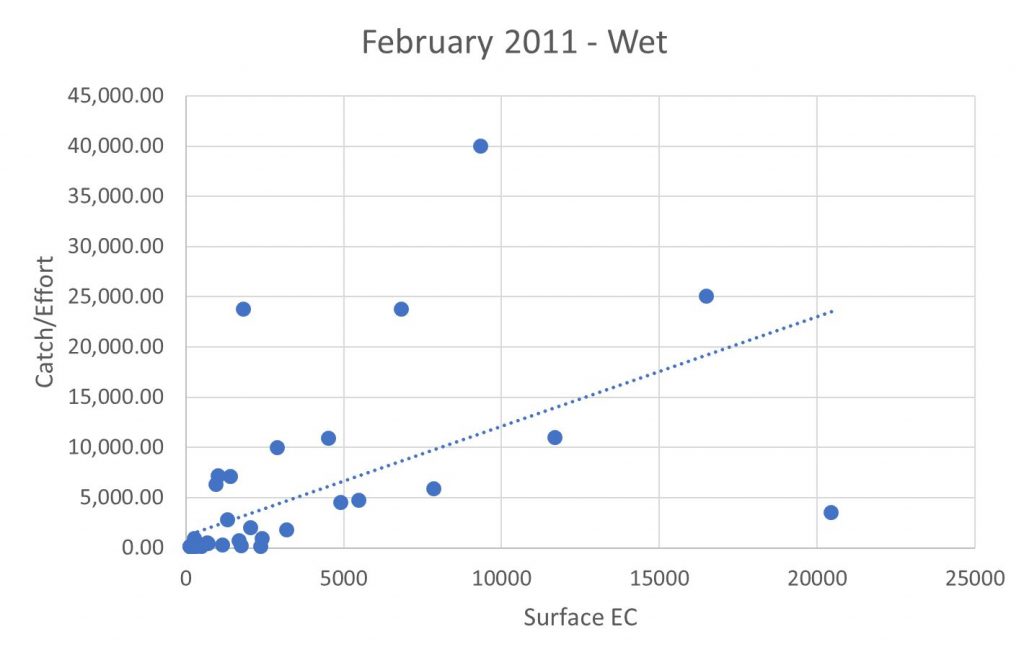
Figure 1. Density of Pacific herring in larval surveys of the Bay-Delta versus surface salinity in February 2011, a wet water year.
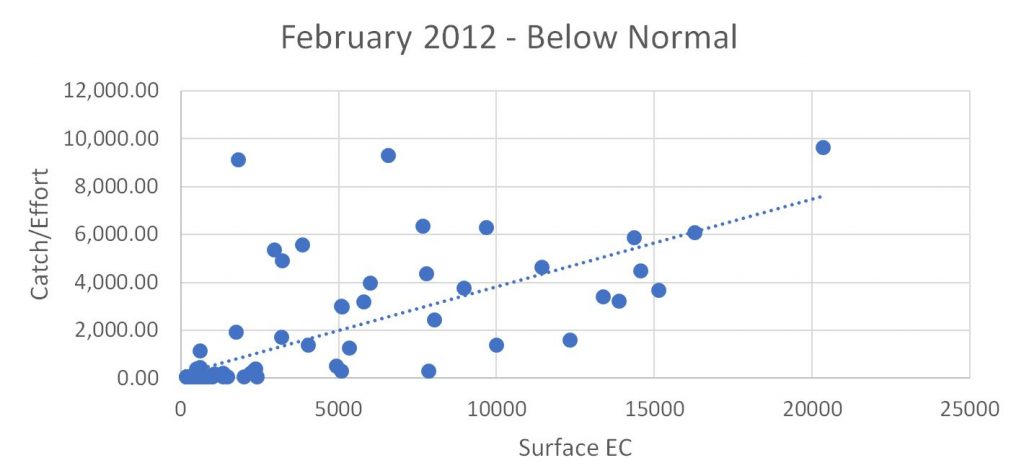
Figure 2. Density of Pacific herring in larval surveys of the Bay-Delta versus surface salinity in February 2012, a below normal water year.
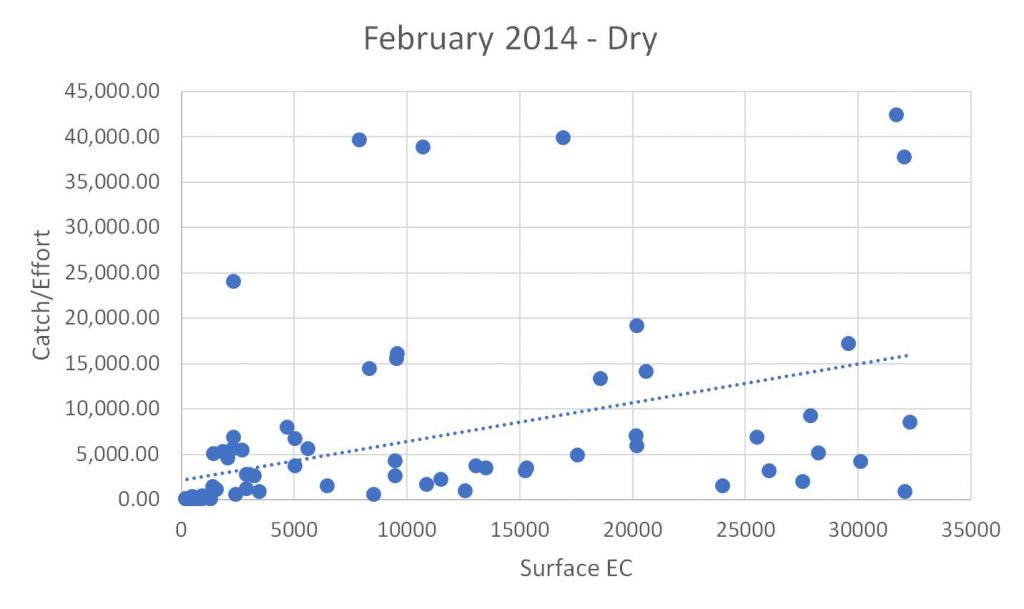
Figure 3. Density of Pacific herring in larval surveys of the Bay-Delta versus surface salinity in February 2014, a critically dry water year.
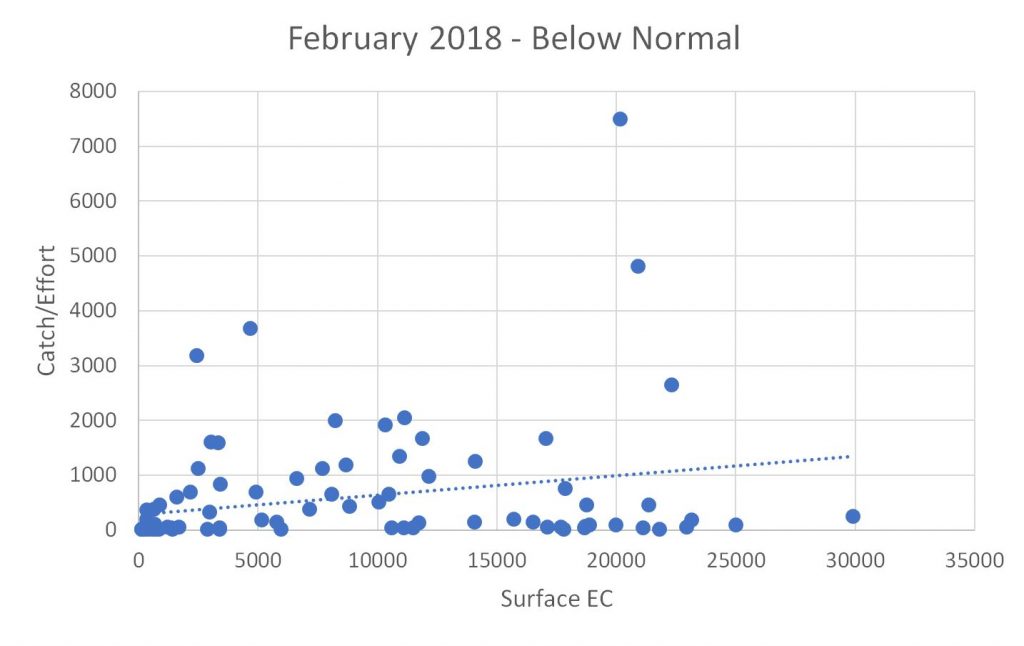
Figure 4. Density of Pacific herring in larval surveys of the Bay-Delta versus surface salinity in February 2018, a below normal water year.
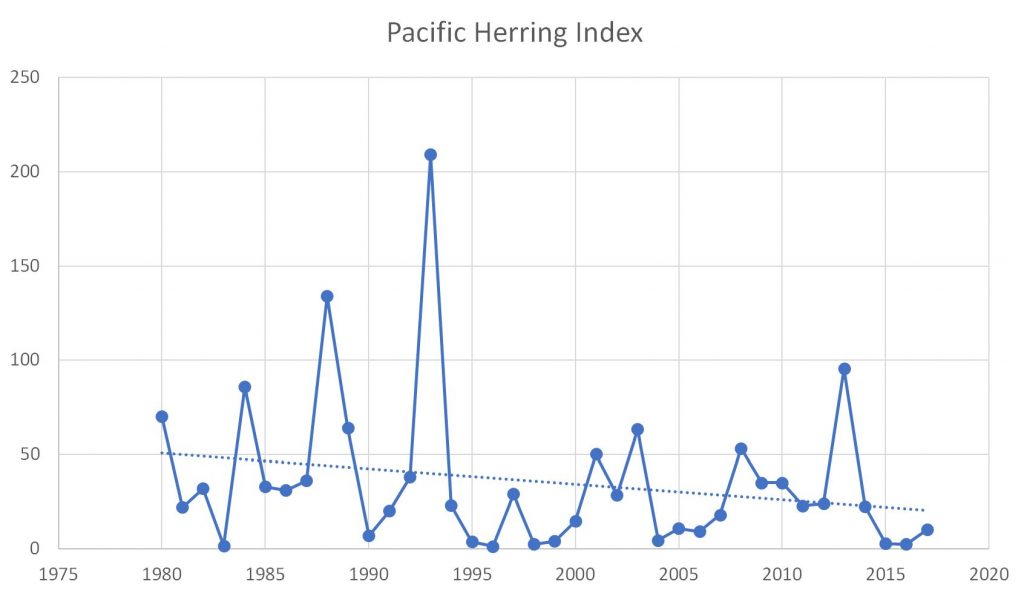
Figure 5. Long term trend in Pacific herring average April catch per trawl in stations 100-500s in Bay in Bay midwater trawl survey.









